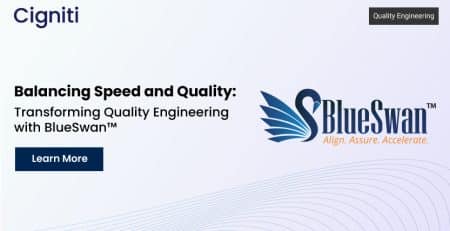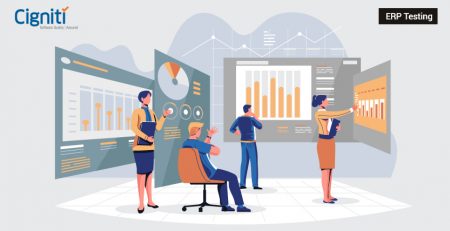7 Challenges and Advantages for Subscribers Opting for ERP SaaS Subscription Model
What is ERP?
Organizations can manage daily operations and automate back-office procedures using enterprise resource planning (ERP) software. Financials, accounting, purchasing, project management, risk management, supply chain management, enterprise performance management (EPM), adaptive intelligence, and analytics are some of the ERP capabilities.
What is SaaS in Oracle Fusion?
Service-based software users can subscribe to ERP SaaS solutions for enterprises in finance, supply chain, human resources, customer experience, sales, and marketing using the cloud-based software delivery model known as SaaS.
You merely sign up for a subscription with a cloud provider, who then creates and maintains cloud application software, offers automatic software upgrades, and makes the software accessible to its clients on a pay-as-you-go basis through the internet. All the traditional software, including middleware, application software, and security, is managed by the public cloud provider. To install, scale, and upgrade business solutions faster than maintaining on-premises systems and software, SaaS customers can significantly reduce expenses. They can also more precisely forecast the total cost of ownership.
How does the ERP subscription model work?
Instead of selling the program itself, the Service Provider or Vendor keeps complete ownership. The suppliers are required to offer ongoing maintenance, repairs, support, and updates as part of the subscription fee. Additionally, there is a pay-per-use pricing structure that enables companies to scale back without worrying about shelling out money for things they aren’t using.
Challenges for Subscribers Opting for ERP SaaS Subscription Model
Here are a few challenges for subscribers opting ERP SaaS subscription model.
- Offering Design: To prosper in the subscription economy, your offering must be beneficial, trustworthy, appealing, and fulfill its promise. To draw new customers, keep the ones you already have, and most importantly, expand your client base, you must carefully consider how to price and package that subscription product.
- The requirement for data protection: As consumers and businesses become more selective about who they trust with their data, vendors will confront serious problems with data storage, security, and privacy. The public disclosure of data collection practices with complete openness and accountability will be the distinguishing feature of credible companies from the perspective of privacy-conscious end users. SaaS companies with a global reach should also consider the legal and regulatory frameworks in each nation when handling customer data.
- Global operation scalability: Many early-stage SaaS businesses established in India struggle with GTM when it comes to scaling overseas. When expanding into new markets, successful companies frequently employ a strategy that involves first launching digitally led demand creation campaigns and then building out local customer-facing personnel. It will be up to the leadership to select the best candidates from around the world to create locally rooted teams that are internationally connected through common culture and knowledge.
- Winning Customer Trust: In the SaaS industry, every single customer you acquire is significant. Unfortunately, several SaaS companies make the marketing error of disregarding their present customers. One loyal customer can bring in a lot of money for your company, therefore this weakness could be disastrous. Because of this, even one customer who decides to do business somewhere else could cost your company thousands of dollars.
- The SaaS Industry Changes Constantly: The next issue, which is the rapid growth of technology, is one that every person in the SaaS industry is aware of. As cutting-edge technology develops, your software might experience adjustments, just like most companies in this sector. You must therefore be adaptable. If you don’t, you can quickly become irrelevant.
- Integration Issues: Poor integration may lead to several issues, such as the CRM’s inability to sync accounting or sales data. Since users often edit and upload files to numerous systems, the data needs to be updated consistently across all of them. Integration requires highly skilled professionals, who might not be present on every IT team. This may raise installation expenses because SaaS integration could be expensive. Businesses could require external assistance, like integration as a service provider. The ideal strategy to cut integration costs is to choose a solution that offers seamless integration with all the systems a company is using and preferably has an open API.
- Changes in compliance and privacy: When privacy is prioritized, security and regulatory compliance must come last. Customers rely on your product to help them manage customer data while maintaining compliance and keeping that data safe and secure. As rules change, your team must move quickly. This makes frequent product updates necessary to keep up with the changing regulatory landscape.
Advantages of ERP SaaS Model
The SaaS subscription model provides several advantages. Here, we outline key benefits worth considering:
Advantages for Subscribers
- Access to Upgraded Technology: The largest benefit for subscribers is this. Users can get modern technology without spending any money. The cost of R&D, upgrades, patches, and maintenance falls on the vendor.
- Simplified Budget: Traditional pricing choices are significantly more expensive than SaaS subscription models. Spreading out costs into smaller, anticipated charges makes it easier to prepare for and much simpler to account for in yearly taxes than having to budget and account for a huge, one-time payment.
- Cost transparency: Organizations may readily forecast with a high degree of precision what their SaaS spending will be for a particular period because SaaS subscription expenses are recurring and itemized. Through this, businesses can prepare for expansion by projecting future costs based on present prices.
- Reliable support: There is always a very real risk that a client company will decide to sever relations and switch to another vendor for subscription SaaS providers. Vendors must be able and ready to offer the highest level of support to avoid this. This applies to the service as well; if it is not user-friendly, clear, and effective, users will just cancel their memberships and find something else. As a result, there is intense competition among subscription SaaS companies to deliver an enjoyable user experience.
- Unrestricted scalability: Businesses must adjust their IT resources in accordance with any expansion or contraction to fulfill demand. Organizations may simply modify their subscription agreements to consider rising or falling data needs thanks to SaaS subscriptions, which gives them the freedom to do just that. By doing this, firms are guaranteed to always have the right number of software resources available.
- State-of-the-art security: Cyberthreats are live, and businesses require software security that is as dynamic to secure themselves. The capacity of subscription SaaS companies to stay one step ahead of the different threat vectors that target their clients is essential to their survival. This entails not only releasing patches and fixes for any recently identified flaws but also actively looking for any remaining gaps to close them before they may be exploited. These updates are often released automatically, preventing any service interruptions.
- Advantages of Building ERP SaaS: While there are a few benefits to choosing SaaS over an on-premises version, the key distinction will be the delivery method.
- Compared to the conventional desktop software approach, a centralized SaaS platform is simpler and less expensive to maintain.
- Because it is far more difficult to pirate cloud-based software, SaaS can assist businesses to reduce software piracy.
- Software manufacturers can easily roll out upgrades and security fixes to make the software secure for every user.
- SaaS Equals Higher Revenue Over Time Due to the lack of a significant up-front fee, SaaS enables software suppliers to offer users a more reasonable service. Instead, a subscription-based business model would be used by the software vendor to make money.
While the transition from a one-time upfront payment model to a subscription one would initially result in a slower revenue stream, over time the subscription model’s revenues will surpass those from the upfront model.
Conclusion
It is projected that ERP SaaS would expand despite the challenges. However, most of these issues may be significantly avoided by completing a thorough analysis, carrying out integration appropriately, understanding business objectives, and carefully choosing the provider. These trends would indicate that there is still a lot of room for growth in the ERP SaaS ecosystem, both in terms of what we can produce and how we can serve clients all over the world.
Cigniti’s ERP testing practice offers a full suite of integrated ERP testing services across the lifecycle of ERP projects – Implementation, Upgrade, Rollout, Production Support, and Maintenance. Our comprehensive testing strategy, domain expertise, and extensive experience in delivering ERP testing projects for global clients enable us to make your ERP adoption highly effective with better quality. Cigniti’s ERP Test Accelerator kit ensures rapid results by reducing the overall testing time, cost, and risk.
Need help? Consult our ERP Testing experts to learn more about the ERP SaaS subscription model.





Leave a Reply